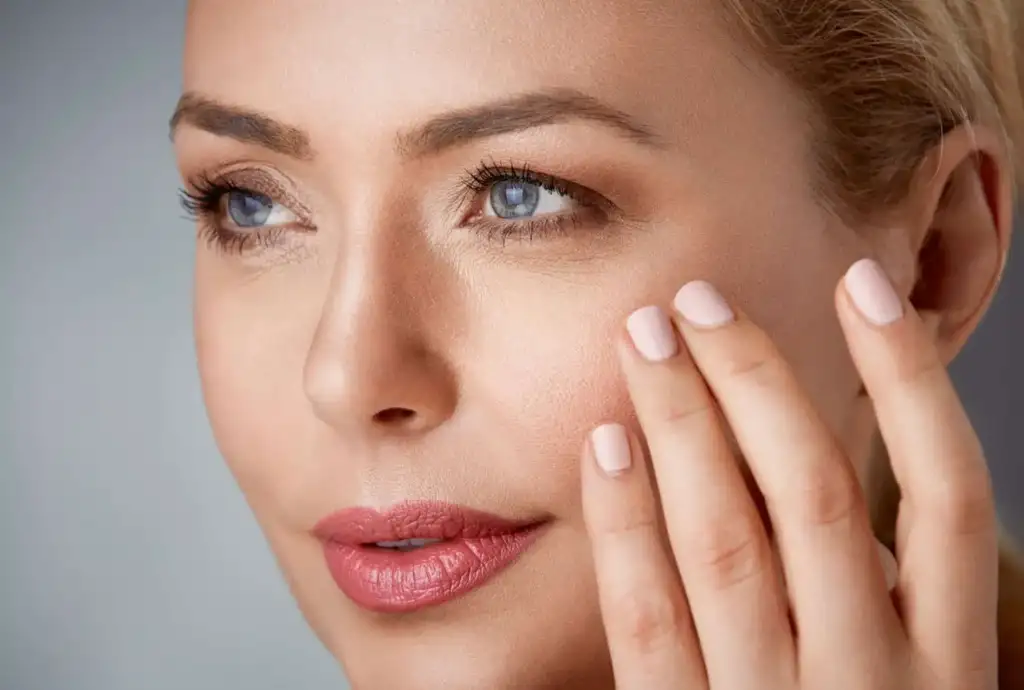
Blepharoplasty:
Blepharoplasty, or eyelid surgery, can improve the appearance of the area around your eyes. It’s a procedure that reduces bagginess from your lower eyelids and removes excess skin from your upper eyelids. As skin ages, it gradually loses its elasticity. A lack of elasticity, combined with the relentless pull of gravity, causes excessive skin to collect in your upper and lower eyelids. Blepharoplasty can be performed on your upper eyelids, lower eyelids or both.
Blepharoplasty often means removing excess skin, muscle and underlying fatty tissue. But sometimes providers can reposition tissues rather than removing them. While it’s primarily a cosmetic procedure, blepharoplasty can also improve the field of vision in people whose sagging upper eyelids obstruct their visual field.
Blepharoplasty with fat removal doesn’t eliminate dark circles under your eyes or remove crow’s feet or other facial wrinkles. Other surgical and nonsurgical procedures that reposition fat, fill the hollows under the eyes or lift your cheeks can improve dark circles. Providers can perform blepharoplasty at the same time as other facial surgery procedures, such as laser resurfacing or brow lifts.


Who is a good candidate for blepharoplasty (eyelid surgery)?
The best candidates for blepharoplasty surgery are generally people at least 30 years old who are in good health and have no other eye conditions. Tell your healthcare provider if you have any of the following conditions:
- Eye disease, like glaucoma, dry eyes or a detached retina.
- Thyroid disorders, like Graves’ disease, hypothyroidism or hyperthyroidism.
- Cardiovascular disease, high blood pressure or other circulatory disorders.
- Diabetes.
Be realistic about the expectations you have for blepharoplasty. Eyelid surgery can enhance your appearance and help build your confidence. But you shouldn’t expect the surgery to drastically change your look. Many people have eyes that aren’t perfectly aligned or that appear to be different sizes. Asymmetrical features occur during the early stages of development. Blepharoplasty won’t alter your facial structure. It’s important to know your face well before you decide to have surgery. Think carefully about your expectations and discuss them with your surgeon.
What happens during a blepharoplasty procedure?
Depending on your goals and the recommendation of your surgeon, blepharoplasty can involve your upper eyelids, lower eyelids or both.
Upper blepharoplasty
During an upper blepharoplasty, your surgeon will make cuts (incisions) in the natural crease of your upper eyelid. These incisions will be hidden when your eyes are open. Your surgeon will remove excess skin and protruding fat, and then they’ll close the incisions.
Lower blepharoplasty
During a lower blepharoplasty, your surgeon will make an incision just below your lower eyelash line. They’ll remove excess skin in your lower eyelid through this incision. They may also use an incision hidden inside your lower eyelid (transconjunctival incision) to correct lower eyelid issues and redistribute or remove excess fat.
How long does a blepharoplasty procedure take?
A surgeon can typically complete an upper blepharoplasty in about 45 minutes to one hour. It takes about two hours if both upper and lower eyelids are done at the same time, depending on whether fat is repositioned or if there’s additional work performed.
What happens after a blepharoplasty procedure?
There will be a stitch in each of your upper lids that’ll remain for about a week. The lower lids don’t require stitches if the incisions are made on the inside of your lids. It’s common for swelling and bruising to occur in your upper and lower lids. Expect to stay home from work and limit your activities for several days after surgery to allow your eyelids to heal.

